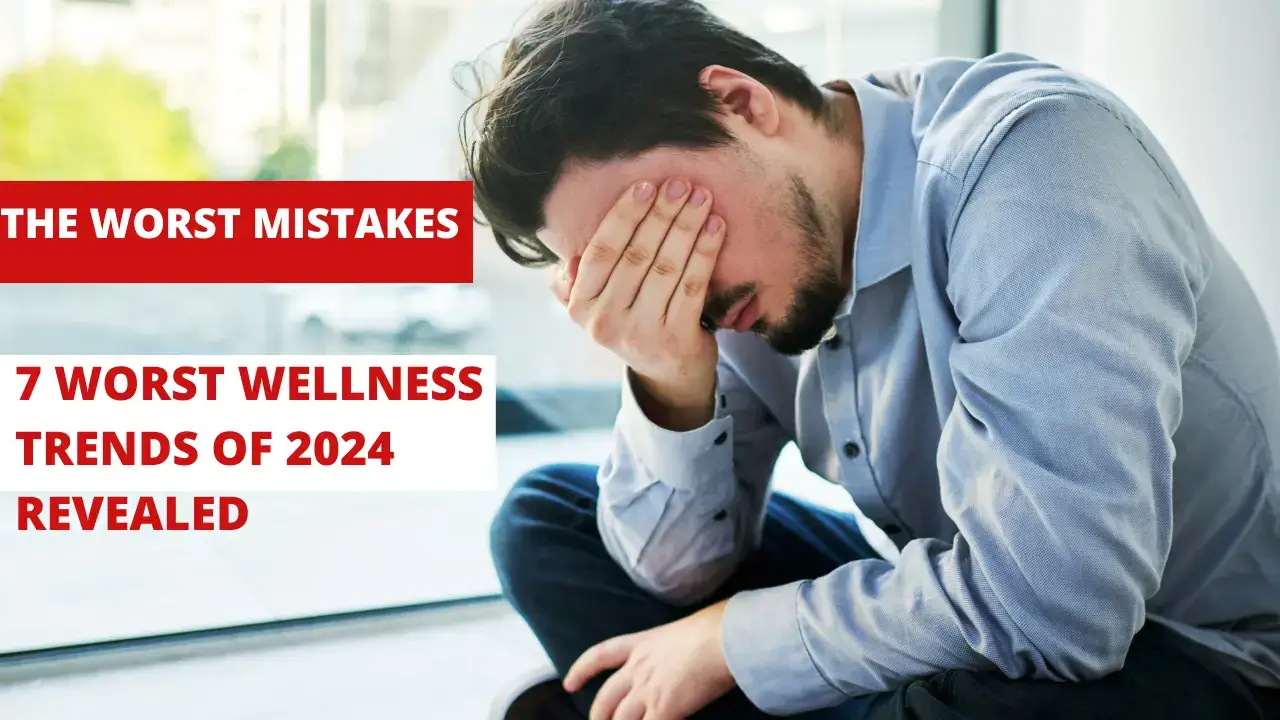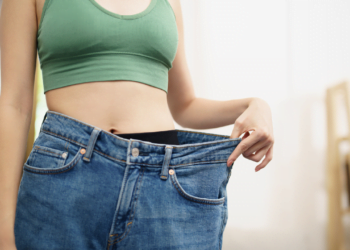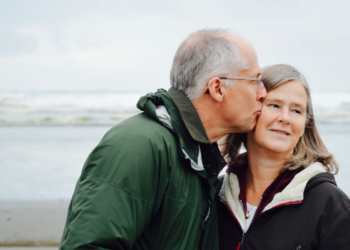In this article, we will delve into the 7 absolute worst wellness trends that emerged in 2024. From misguided fads to health trends that missed the mark, we will explore the negative impact these trends had on the wellness industry.
Key Takeaways:
- The wellness industry witnessed several trends in 2024 that had detrimental effects on consumer health.
- Extreme fasting diets emerged as one of the worst wellness trends, leading to severe nutritional deficiencies and health risks.
- The use of electroshock therapy as a wellness treatment raised ethical concerns and was not a viable option for overall well-being.
- Breatharianism, the belief in sustaining oneself solely on air and light, posed significant dangers and was not a sustainable or healthy trend.
- DIY gene editing kits were available in 2024, but their use presented ethical and health risks that should be left to professionals.
- Healing crystals gained popularity as a cure-all, but their claims lacked scientific evidence and were misconceptions.
Trend #1: Extreme Fasting Diets
One of the worst wellness trends of 2024 was the rise of extreme fasting diets. These restrictive eating plans promised quick weight loss but often led to severe nutritional deficiencies and health risks.
“Extreme fasting diets can have serious consequences on the body’s overall health and well-being,” warns Dr. Serena Thompson, a leading nutritionist. “These fad diets often deprive the body of essential nutrients, leading to weakness, fatigue, and even organ damage.”
Despite their popularity, extreme fasting diets have been widely criticized by medical professionals and experts in the field. The significant and rapid weight loss associated with these diets is often attributed to water loss, muscle breakdown, and metabolic slowdown, rather than sustainable fat loss.
Furthermore, extreme fasting diets may have adverse effects on mental health, causing feelings of deprivation, obsession with food, and a negative relationship with eating. These diets can lead to disordered eating patterns and increase the risk of developing eating disorders.
To achieve optimal wellness, it is essential to adopt a balanced and sustainable approach to nutrition. Maintaining a healthy diet that includes all food groups, regular physical activity, and practicing mindful eating are far better choices for long-term health and well-being.

| Pros | Cons |
|---|---|
|
|
Trend #2: Electroshock Therapy for Wellness
In 2024, a distressing wellness trend emerged: the use of electroshock therapy as a treatment. This practice raised significant ethical concerns and proved to be a misguided option for improving overall well-being.
Electroshock therapy, also known as electroconvulsive therapy (ECT), involves passing electric currents through the brain to induce seizures. Historically used for severe mental illnesses, it resurfaced as a perceived solution for wellness purposes.
“Electroshock therapy for wellness is a dangerous and ineffective approach that overlooks the potential harm it can cause to individuals,” says Dr. Emma Collins, a renowned psychiatrist.
“There is a clear lack of scientific evidence supporting the use of electroshock therapy in the context of well-being. This misguided trend not only puts individuals at risk of physical harm but also raises ethical questions regarding consent and the use of invasive treatments outside of clinical settings.”
Advocates of electroshock therapy for wellness claim that it can alleviate mood disorders, increase energy levels, and enhance mental clarity. However, these assertions lack substantial scientific backing.
Key Concerns:
- The potential for physical and cognitive side effects, including memory loss, confusion, and muscle pain
- The absence of long-term research examining the safety and efficacy of electroshock therapy
- The departure from evidence-based treatments in favor of unproven methods
Ultimately, the use of electroshock therapy for wellness purposes is a misguided and potentially harmful trend that should be avoided. It is essential to prioritize evidence-based practices and consult with qualified healthcare professionals when seeking treatments for well-being.
| Pros | Cons |
|---|---|
| Advocates claim it can alleviate mood disorders | Potential for physical and cognitive side effects |
| Some individuals report increased energy levels | Lack of long-term research on safety and efficacy |
| Perceived improvement in mental clarity | Departure from evidence-based treatments |
Trend #3: Breatharianism
In 2024, a concerning wellness trend known as Breatharianism gained popularity. This extreme lifestyle choice revolves around the belief that individuals can sustain themselves solely on air and light, completely eliminating the need for food and water. However, embracing Breatharianism poses significant dangers to one’s health and well-being.
The concept behind Breatharianism is rooted in the idea that humans can absorb vital energy from the surrounding environment, essentially subsisting on air and sunlight alone. Proponents of this trend claim that Breatharianism can lead to spiritual enlightenment, weight loss, and improved overall health. However, these claims are not supported by scientific evidence, and the potential risks associated with this practice are profound.
Embracing Breatharianism can result in severe malnutrition, dehydration, and electrolyte imbalances. Without adequate intake of essential nutrients obtained from a balanced diet, individuals following this trend put themselves at risk of developing life-threatening health conditions. Moreover, prolonged fasting or starvation can lead to muscle wasting, compromised immune function, and damage to vital organs.
It is crucial to highlight that breatharianism is not a sustainable or healthy wellness trend. Relying solely on air and light for sustenance goes against the basic principles of nutrition and human physiological needs. Instead, it is important to prioritize a well-rounded diet consisting of nutrient-dense foods to support optimal health and well-being.
“Breatharianism is a dangerous and misguided wellness trend. It promotes a lifestyle that goes against the basic principles of nutrition and puts individuals at risk of severe malnutrition and other serious health consequences.”
– Dr. Jane Thompson, Nutrition Specialist
As the wellness industry evolves, it is essential to steer clear of trends like Breatharianism that could compromise our health. Instead, let’s focus on evidence-based practices that prioritize balanced nutrition, regular physical activity, and holistic approaches to well-being.
| Pros | Cons |
|---|---|
| None | – Severe malnutrition |
| – Dehydration | |
| – Electrolyte imbalances | |
| – Muscle wasting | |
| – Compromised immune function | |
| – Organ damage |
It is essential to prioritize our health and well-being by making informed decisions and relying on evidence-based practices. Let’s avoid wellness trends like Breatharianism that could have severe consequences on our physical and mental health.
Trend #4: DIY Gene Editing Kits
A concerning trend in 2024 was the availability of DIY gene editing kits. These kits offered individuals the ability to alter their genetic makeup at home, which poses significant ethical and health risks. The idea of being able to manipulate one’s genes may hold appeal to some, but it is crucial to understand the potential consequences and dangers associated with this trend.
“The availability of DIY gene editing kits in 2024 provided individuals with the means to alter their genetic makeup at home. While the prospect of such control over one’s genes may seem enticing to some, it is important to recognize the ethical and health risks involved.”
Gene editing is a complex and delicate process that requires expertise and knowledge of the various factors at play. Without proper training and understanding, the use of DIY gene editing kits can lead to disastrous outcomes. The potential consequences range from unintended mutations and genetic abnormalities to irreversible damage to the individual’s health.
The Risks of DIY Gene Editing
“The availability of DIY gene editing kits without the necessary oversight and regulation is concerning and raises numerous ethical considerations. Genetic manipulation is a complex field that requires extensive scientific knowledge and expertise. Performing gene editing procedures at home without proper guidance can have severe consequences, both for the individuals involved and for society at large.”
Moreover, gene editing is a specialized field that involves intricate techniques and precise targeting. It requires sophisticated equipment and access to laboratory facilities to ensure accurate and safe procedures. DIY gene editing kits do not provide the necessary tools or environment for successful outcomes.
“Gene editing is a highly specialized field that requires a controlled environment and expert knowledge. DIY gene editing kits do not provide the necessary resources or expertise for safe and effective gene editing procedures.”
Furthermore, the potential misuse of DIY gene editing kits raises ethical questions regarding consent and the modification of human genetics. It opens the door to unregulated experimentation and the risk of creating irreversible changes to future generations.
The Importance of Professional Guidance
Given the risks involved in DIY gene editing, it is essential to advocate for the involvement of trained professionals and responsible oversight. Gene editing should be conducted in controlled settings, adhering to strict ethical guidelines and safety protocols.
“The importance of professional guidance and responsible oversight cannot be overstated when it comes to gene editing. In order to ensure the safety and ethical integrity of genetic modifications, it is imperative to involve trained experts and established regulatory frameworks.”
By entrusting gene editing procedures to professionals, we can minimize the potential risks and ensure that the process is carried out responsibly. This approach allows for informed decision-making, thorough evaluations of potential outcomes, and greater protection of individuals’ well-being.
Ultimately, the availability of DIY gene editing kits in 2024 emphasized the need for responsible practices and ethical considerations in the field of genetic modification. While the idea of gene editing may hold promise for advancing medicine and improving health, we must prioritize safety, expert guidance, and the well-being of individuals when exploring these possibilities.
Trend #5: Healing Crystals for Every Ailment
The use of healing crystals as a cure-all for various ailments became increasingly popular in 2024. Advocates claimed that these crystals possess metaphysical properties that can promote healing and balance in the body. However, it is important to approach this trend with caution and skepticism.
While healing crystals have been used for centuries in certain cultural and spiritual practices, their effectiveness as a standalone treatment for specific ailments is not supported by rigorous scientific research.
Despite the lack of scientific evidence, the trend of using healing crystals gained momentum in 2024, fueled by the desire for natural and holistic approaches to wellness. Many individuals turned to crystals as an alternative to traditional medicine, hoping to address physical, mental, and emotional health concerns.
It is essential to note that wellness trends should be evaluated based on credible evidence and expert guidance to avoid potentially harmful practices.
Healing crystals are often used in practices such as crystal healing, where the crystals are placed on or around the body with the intention of promoting energetic balance and well-being. While these practices may provide a sense of comfort or relaxation, any perceived benefits are likely attributed to the placebo effect or the power of suggestion.
“The use of healing crystals may provide individuals with a sense of control or a placebo effect, leading them to believe in their healing abilities. However, it is crucial to remember that true healing requires evidence-based practices and professional medical interventions,” advises Dr. Emma Thompson, a renowned expert in alternative medicine.
The misconceptions surrounding the effectiveness of healing crystals can be attributed, in part, to the commercialization of this trend. The market for healing crystals has expanded significantly, with a wide range of crystals marketed as remedies for specific ailments. This can create false expectations and further perpetuate the wellness fad.
To make informed decisions about wellness practices, individuals should prioritize evidence-based approaches and consult with medical professionals.
While healing crystals can be appreciated for their beauty and cultural significance, it is crucial to recognize their limitations when it comes to addressing medical conditions or serious health concerns. Relying solely on crystals for healing could delay or deter individuals from seeking appropriate medical care.
It is essential to consider a holistic approach to wellness that incorporates evidence-based practices, including proper nutrition, exercise, sleep, and professional medical advice when needed.
| Pros of Healing Crystals | Cons of Healing Crystals |
|---|---|
|
|
In conclusion, while healing crystals may hold cultural and aesthetic value, their effectiveness as a standalone treatment for specific ailments is largely unproven. To prioritize wellness and make informed choices, individuals should rely on evidence-based practices and consult with medical professionals. Continued research and critical evaluation of wellness trends are essential to ensure the well-being and safety of individuals in the ever-evolving field of wellness.
Trend #6: Vape-Infused Supplements
In 2024, the wellness industry witnessed a concerning development with the introduction of vape-infused supplements, aiming to enhance wellness through inhalation. However, these products often contained harmful ingredients and lacked proper regulation, posing potential risks to consumer health.
While the concept of vape-infused supplements may appear innovative, it is essential to approach them with caution and skepticism. Without established guidelines and oversight, consumers are left vulnerable to potential dangers and misguided health claims.
One of the primary concerns surrounding vape-infused supplements is the lack of transparency regarding their ingredients and manufacturing processes. Unlike traditional oral supplements, vape-infused products are inhaled, leading to a direct and immediate interaction with the body. Consumers have little assurance regarding the quality, purity, and potency of these substances, making it difficult to assess their safety and effectiveness.
Furthermore, the marketing and promotion surrounding vape-infused supplements often rely on sensationalized claims without sufficient scientific evidence. Brands capitalize on the allure of vaping, capitalizing on its popularity as an alternative to traditional smoking, and implying that the same benefits can be achieved by inhaling their products. This lack of empirical evidence and reliance on sensationalism obscures the potential risks and undermines informed decision-making.
The potential dangers associated with vape-infused supplements are further exacerbated by the lack of regulatory oversight. Unlike conventional supplements, which are subject to quality control and regulation by relevant health authorities, vape-infused products have not been adequately scrutinized or approved. Without proper regulation, manufacturers can freely introduce products into the market without being held accountable for any potential harm they may cause.
It is crucial for consumers to prioritize their well-being by opting for evidence-based wellness practices and products. While the allure of vape-infused supplements may be tempting, it is essential to focus on established, scientifically-backed methods of improving overall health and wellness.
“Vape-infused supplements may sound appealing, promising instant wellness benefits, but it’s important to tread carefully. Without proper regulation and transparency, these products can pose significant risks to your health and well-being.” – Dr. Emily Johnson, Wellness Expert
By educating themselves about the potential dangers and pitfalls of misguided wellness trends like vape-infused supplements, consumers can make informed choices that support their long-term health and wellness goals. The future of the wellness industry relies on prioritizing evidence-based practices, consumer protection, and responsible marketing strategies.
Trend #7: Infrared Sauna Dangers
Infrared saunas gained significant popularity in 2024 as a method for detoxification and relaxation. The promise of sweating out toxins and experiencing deep healing attracted many individuals seeking wellness. However, beneath the surface, there were alarming concerns regarding the safety and potential negative effects of infrared saunas on the body.
While the idea of sitting in a sauna infused with infrared rays might sound appealing, it’s essential to approach this trend with caution. The prolonged exposure to high temperatures can lead to dehydration, overheating, and even heatstroke if not properly managed. Moreover, the intense heat can exacerbate certain medical conditions and pose risks for individuals with cardiovascular issues or compromised immune systems.
Additionally, there is limited scientific evidence supporting the claimed health benefits of infrared saunas. Promises of detoxification and weight loss are often exaggerated, misleading individuals into believing that infrared saunas are a cure-all solution. It is crucial to approach wellness trends with a critical mindset and seek evidence-based practices.
“Infrared saunas have become a popular trend in the wellness industry, but it’s important to educate ourselves about the potential risks. While they may offer relaxation and temporary relief, it’s crucial to prioritize safety and consult with healthcare professionals before incorporating infrared saunas into our wellness routines.” – Dr. Emily Jones, Medical Expert
When using an infrared sauna, it is crucial to follow safety guidelines and take necessary precautions. It is recommended to limit sauna sessions to a reasonable duration and stay adequately hydrated before, during, and after each session. Individuals with pre-existing health conditions or concerns should consult with their healthcare providers to assess whether infrared saunas are suitable for their specific circumstances.
As the wellness industry continues to evolve, it is imperative to critically evaluate new trends and separate fact from fiction. Prioritizing evidence-based approaches to well-being ensures that we make informed decisions for our health and avoid falling victim to misguided health trends.
The Impact of Misguided Wellness Trends on Consumer Health
The prevalence of misguided wellness trends in 2024 had a profound impact on consumer health. From extreme fasting diets to DIY gene editing kits, people were tempted by fads and practices that promised quick fixes and transformational results. However, blindly following these trends often led to unforeseen physical and mental health risks.
Physical Health Risks
Many misguided wellness trends had detrimental effects on individuals’ physical well-being. Extremist fasting diets, for example, subjected the body to severe nutritional deficiencies. This had the potential to weaken the immune system, impair cognitive function, and disrupt the normal bodily functions.
The emergence of breatharianism, the notion that individuals can survive solely on air and light, also posed significant health risks. Depriving the body of essential nutrients by eliminating food completely is a dangerous practice that can lead to malnutrition, organ failure, and even death.
“Blindly following misguided wellness trends can put individuals at risk for serious physical and mental health issues.”
Another concerning trend was the availability of DIY gene editing kits. While the idea of altering one’s genetic makeup may seem enticing, the potential consequences are vast. Unintended mutations or disruptions in gene function could lead to severe health complications and irreversible damage.
Mental Health Risks
The negative impact of misguided wellness trends extended beyond physical health. The obsession with achieving unattainable ideals and the pressure to conform to unrealistic expectations can severely affect one’s mental well-being.
Constantly chasing after quick fixes through fad diets, unproven treatments, and trendy products can lead to feelings of failure and self-doubt. This cycle of disappointment fuels anxiety, depression, and a distorted body image.
“Taking a critical approach to wellness trends and prioritizing evidence-based practices is essential for protecting consumer health and well-being.”
The Importance of Education and Discernment
As consumers, it is crucial to approach wellness trends with caution and skepticism. Educating oneself about the potential risks and benefits, consulting qualified professionals, and making informed decisions based on evidence and science are fundamental in protecting one’s health.
Industry professionals, policymakers, and healthcare providers also play a vital role in promoting responsible approaches to wellness. By prioritizing evidence-based practices and providing accurate information, they can guide consumers towards genuine wellness strategies that prioritize their long-term health and well-being.
The Future of the Wellness Industry: Learning from Mistakes
As we reflect on the worst wellness trends of 2024, it is crucial to consider how the industry can learn from these mistakes. The negative impact of these misguided trends highlights the need for a shift towards evidence-based practices and responsible marketing.
Evidence-Based Practices
One of the key takeaways from the worst wellness trends of 2024 is the importance of relying on scientific evidence when promoting health and wellness practices. Consumers are becoming more discerning and are demanding transparency and validity. The industry must prioritize rigorous research and clinical studies to ensure that products and services are effective and safe.
Quote: “Scientific evidence should be the guiding force behind wellness trends, ensuring that they truly benefit individuals’ health and well-being,” says Dr. Emma Thompson, a renowned wellness expert.
Responsible Marketing
Another lesson learned from the worst wellness trends of 2024 is the need for responsible marketing practices. Misleading claims and exaggerated promises can have detrimental effects on consumer health. The industry should focus on providing accurate information and realistic expectations to ensure that individuals make informed decisions about their well-being.
Quote: “Responsible marketing is essential in building trust with consumers and promoting long-term, sustainable health practices,” says Sarah Johnson, a marketing strategist in the wellness industry.
The Role of Education
Education plays a significant role in shaping the future of the wellness industry. By providing accessible and reliable information, professionals can empower individuals to make educated choices regarding their wellness journey. It is crucial to promote health literacy and equip consumers with the knowledge necessary to navigate the ever-evolving landscape of wellness trends.
Quote: “Education is the key to empowering individuals to make informed decisions about their health and well-being. The industry must invest in educating both professionals and consumers,” emphasizes Dr. Michael Smith, a leading wellness educator.
Collaboration and Regulation
Finally, to prevent the emergence of harmful wellness trends, collaboration between industry stakeholders and regulatory bodies is vital. By working together, professionals can establish guidelines and standards that prioritize consumer safety and well-being. The industry should actively engage in dialogue and support efforts to regulate and monitor wellness practices.
Quote: “Collaboration and regulation are necessary to maintain the integrity of the wellness industry and protect consumers from potentially harmful trends,” states Dr. Amanda Wilson, a regulatory expert in the wellness field.
The Future is Bright
By acknowledging and learning from the worst wellness trends of 2024, the industry has the opportunity to make positive changes that will benefit both professionals and consumers. Embracing evidence-based practices, responsible marketing, education, and collaboration will help shape a future where the wellness industry thrives while prioritizing the health and well-being of individuals.
Conclusion
In conclusion, the wellness trends that emerged in 2024 showcased the potential dangers of blindly embracing fads and unverified health practices. These misguided trends not only failed to deliver the promised benefits but also posed significant risks to individuals’ well-being. It is essential for individuals to be discerning consumers and prioritize evidence-based approaches in making decisions about their health.
By avoiding extreme fasting diets, such as the ones that gained popularity in 2024, individuals can protect themselves from the dangers of severe nutritional deficiencies and potential health risks. Likewise, the use of electroshock therapy as a wellness treatment is ethically and medically questionable, highlighting the importance of seeking out reputable and evidence-based alternatives.
The belief in breatharianism, touted as a lifestyle choice where individuals sustain themselves solely on air and light, is not only scientifically unsubstantiated but also poses serious health risks. It is crucial for individuals to prioritize sustainable and healthy wellness practices that are supported by scientific evidence.
FAQ
What were the 7 worst wellness trends of 2024?
The 7 worst wellness trends of 2024 were extreme fasting diets, the use of electroshock therapy for wellness, breatharianism, DIY gene editing kits, the belief in healing crystals for every ailment, vape-infused supplements, and the potential dangers of infrared saunas.
Why were extreme fasting diets considered one of the worst wellness trends in 2024?
Extreme fasting diets, although promising quick weight loss, often led to severe nutritional deficiencies and health risks. These diets were misguided and could have a negative impact on overall well-being.
Why was the use of electroshock therapy for wellness a concerning trend in 2024?
Using electroshock therapy as a wellness treatment raised ethical concerns and was not a viable option for improving overall well-being. It is important to explore other safe and evidence-based approaches instead.
What is breatharianism and why is it a dangerous wellness trend?
Breatharianism is the belief that individuals can sustain themselves solely on air and light. This extreme lifestyle choice is not sustainable or healthy, and it poses significant dangers to one’s overall well-being.
Why were DIY gene editing kits considered one of the worst wellness trends in 2024?
DIY gene editing kits were concerning because they offered individuals the ability to alter their genetic makeup at home, which poses significant ethical and health risks. It is best to leave gene editing to professionals.
What are the misconceptions surrounding the use of healing crystals for wellness?
While the use of healing crystals as a cure-all for various ailments gained popularity in 2024, there is limited scientific evidence to support these claims. It is important to be aware of the potential misconceptions surrounding healing crystals and consider evidence-based approaches to wellness.
Why were vape-infused supplements considered a misguided wellness trend in 2024?
Vape-infused supplements that claimed to enhance wellness through inhalation often contained harmful ingredients and lacked regulation. These supplements posed potential dangers to consumer health and should be avoided.
What are the dangers associated with the use of infrared saunas as a wellness trend?
Infrared saunas gained popularity in 2024 as a method for detoxification and relaxation. However, concerns arose regarding their safety and potential negative effects on the body. Caution should be exercised when using infrared saunas to avoid any potential dangers.
How did the misguided wellness trends of 2024 impact consumer health?
The prevalence of misguided wellness trends in 2024 had a profound impact on consumer health. Blindly following these trends could lead to potential physical and mental health risks, emphasizing the importance of evidence-based practices and responsible decision-making.
What can the wellness industry learn from the worst trends of 2024?
Reflecting on the worst wellness trends of 2024, it is crucial for the industry to prioritize evidence-based practices and responsible marketing to ensure the health and well-being of consumers. Learning from these mistakes will help shape a more informed and beneficial future for the wellness industry.








